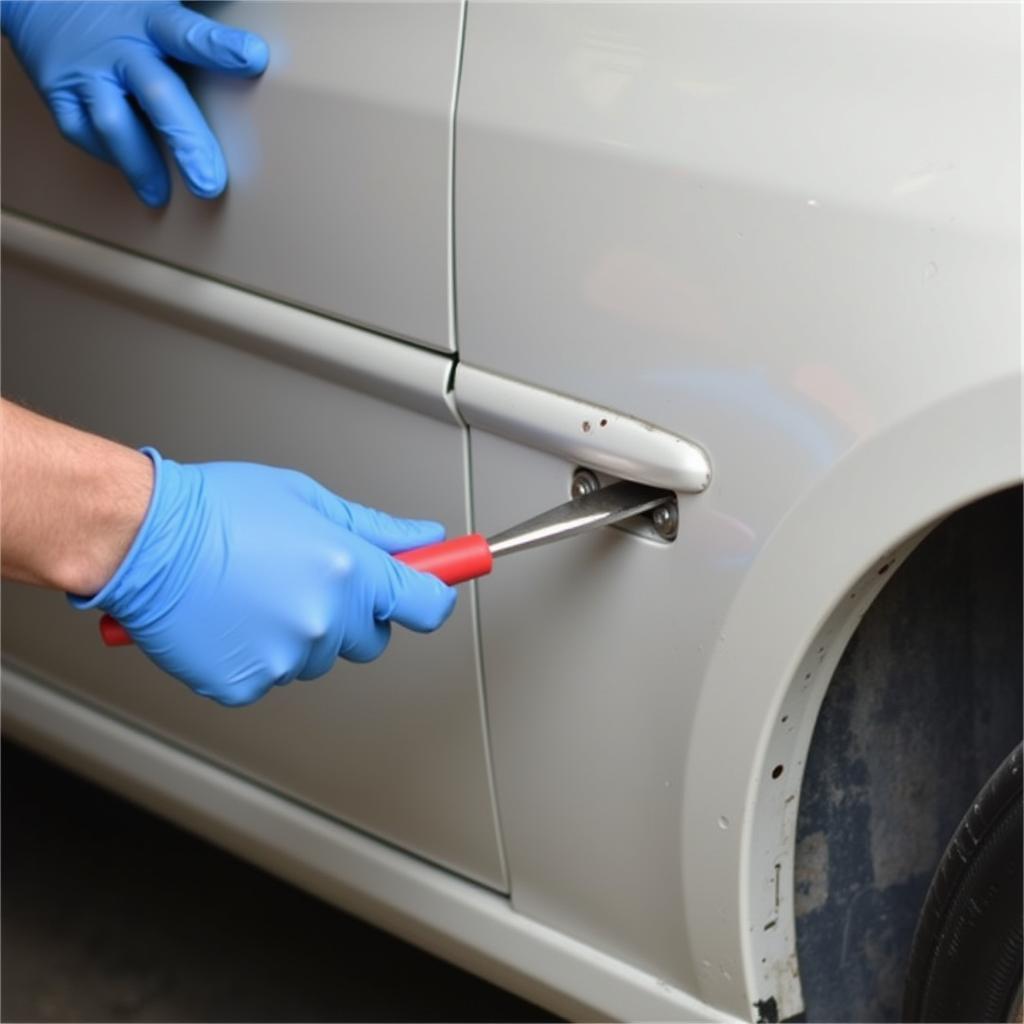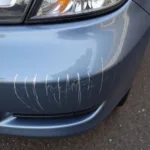Fixing a rear car bumper is a common car repair issue many car owners face. Whether it’s a minor dent, scratch, or a more severe crack, knowing how to repair it yourself can save you money and time. This guide will provide you with a comprehensive walkthrough on how to repair a rear car bumper, empowering you to tackle this DIY project with confidence.
Assessing the Damage: Know What You’re Dealing With
Before you begin, it’s crucial to assess the extent of the damage to your rear bumper.
- Minor scratches and scuffs: These can often be buffed out with polishing compound.
- Small dents: These might be repairable with a heat gun and some careful pushing.
- Cracks and holes: These will require more involved repairs using a plastic welding kit or fiberglass filler.
- Severe damage: If the bumper is severely damaged or if you’re uncomfortable with the repair process, it’s best to consult a professional car bumper repair shop chicago.
Gathering Your Tools and Materials: Be Prepared
Once you’ve assessed the damage, gather the necessary tools and materials. Here’s a basic list:
- Cleaning supplies: Soap, water, wax and grease remover
- Sandpaper: Variety of grits (e.g., 180, 320, 400)
- Masking tape and paper
- Body filler (if needed)
- Plastic welding kit (if needed)
- Primer
- Automotive paint (matching your car’s color)
- Clear coat
- Safety equipment: Gloves, safety glasses, and a respirator
Repairing a Rear Bumper: A Step-by-Step Guide
The repair process will vary depending on the type and extent of damage. However, here’s a general guide:
-
Clean the damaged area thoroughly. Use soap and water, then a wax and grease remover.
-
Sand the damaged area. Start with a coarser grit sandpaper (e.g., 180) and gradually move to finer grits (e.g., 400) to create a smooth surface for the filler to adhere to.
-
Apply body filler (if needed). Mix the body filler according to the manufacturer’s instructions and apply it to any dents or holes, using a putty knife to smooth it out.
-
Sand the filler smooth. Once the filler dries, sand it down until it’s flush with the surrounding bumper.
 Applying Body Filler to Car Bumper
Applying Body Filler to Car Bumper
-
Mask off the area to be painted. Use masking tape and paper to protect the surrounding areas of the car.
-
Prime the repaired area. Apply several thin coats of primer, allowing each coat to dry before applying the next.
-
Apply automotive paint. Shake the paint can well and apply several thin coats, allowing each coat to dry.
-
Apply clear coat. This will protect the paint and give it a glossy finish.
-
Remove masking tape. Once the clear coat is dry, carefully remove the masking tape.
Repairing Cracks: Plastic Welding vs. Fiberglass
For cracks in your bumper, you have two primary options: plastic welding or using fiberglass filler.
-
Plastic welding: Provides a more durable, long-lasting repair, especially for larger cracks. It requires a specialized kit and might be more challenging for beginners.
-
Fiberglass filler: Easier to work with and suitable for smaller cracks. It may not be as durable as plastic welding, especially in areas prone to flexing.
“When repairing cracks, it’s crucial to assess the size and location. For smaller cracks in less critical areas, fiberglass filler can be a quick and effective solution. However, for larger cracks or areas that experience significant stress, I always recommend opting for plastic welding to ensure a lasting repair,” says John Miller, Senior Automotive Technician at Miller’s Auto Garage.
Preventing Rear Bumper Damage: Tips to Keep Your Bumper Looking New
Prevention is always better than cure! Here are some simple tips to help you avoid rear bumper damage in the future:
- Park strategically: Opt for parking spaces away from high-traffic areas or choose reverse parking to minimize the risk of getting hit.
- Be mindful of your surroundings: Pay close attention to your surroundings when reversing, especially in tight spaces.
- Install bumper protectors: Consider adding bumper protectors or guards for an extra layer of defense.
Conclusion: A Little Effort Goes a Long Way
Repairing a rear car bumper might seem daunting at first, but with the right information, tools, and a bit of patience, it’s an achievable DIY task. By following the steps outlined in this guide, you can restore your bumper to its former glory and save yourself a trip to the auto shop. And remember, if you’re ever unsure about any part of the process, it’s always best to consult a professional car bumper repair marlton for assistance.

